Comparing Top IoT Development Platforms
Before starting an IoT project, you need to make a series of choices that will impact the architecture and specifics of your system. For example, you will:
- select IoT connectivity options,
- choose programming languages,
- consider IoT hardware platforms for low-level and edge devices, etc.
Choosing an IoT development platform and cloud services is another important decision to make at this point. These will be the environment and tools that you will use to build your system and manage your devices and data.
To help you with this choice, we’ve drawn up this IoT platform comparison article with the essentials about some of the most popular platforms and reasons to use them on your project.
You’ll learn:
- Why you need IoT platform services in the first place.
- What the top IoT development platforms offer.
- what other platform options are available on the market.
By the way, if you need a checklist to choose any tool for your development needs, read the guide on how to compare software development tools, solutions or other components shared by our CTO. Or you can directly contact our expert team for a consultation.
Now let’s get back to IoT platforms comparison.
Why using development platforms for IoT?
Before making any comparison, we should figure out why it’s a good idea to use an IoT platform on your project in the first place. Here are several benefits that most platforms provide.
Managed services
Many IoT platforms offer fully-managed services, which means they scale up on demand and are self-maintained. You won’t need to bother how your system will adapt to the growing number of devices or data volume. As a rule, these platforms have robust resources and can either perform standard patching and upgrading on their side or provide you with services for easy over-the-air updates.
Inbuilt security
Security has always been one of the biggest challenges in IoT development. Remember the case in Las Vegas casino when hackers used a connected fish tank to get access and steal 10G of confidential data? Low-level sensor devices based on simple IoT development boards can be a weak point in an IoT system and pose a real threat to the integrity of the whole system.
Therefore, overall multiple-step security is crucial. However, to implement and maintain healthy security practices over a multi-component system is not so easy.
IoT development platforms offer packaged security solutions for every layer of a system thus lifting a serious weight off the developer’s shoulders.
Convenience and simplicity
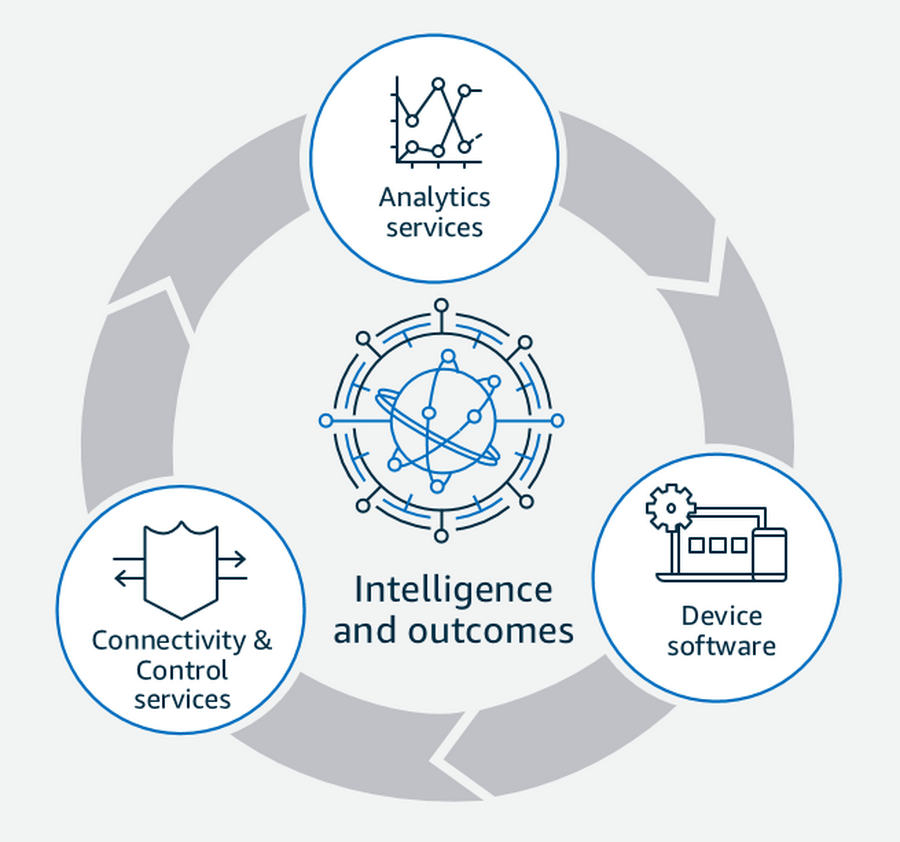
Usually, major IoT platforms like the ones we will be talking about have all the services you need in one place, from bringing your network of devices online to handling ML-based data analytics. Some providers even offer prebuilt templates for standard IoT applications, plenty of guides and developer tools as well as open-access libraries.
Cost-efficiency
Often, IoT platform services are paid depending on the number of devices, messages, the volume of data processed, etc. This granular pricing model helps avoid overpaying, goes without flat fees or upfront cost. In the end, customers pay only for the services they use. Also, many platforms offer free trials and multiple free tier options to let you get a hand of some services and figure out if you want to stay or go on shopping around.
Best Development Platforms for IoT
Earlier, we have reviewed three best development platforms for IoT in detail – AWS IoT platform development, Microsoft Azure IoT and Google IoT development. You can check every review following the given links. Now, let’s put them side by side and see what each of the platforms offers for every part of IoT system development.
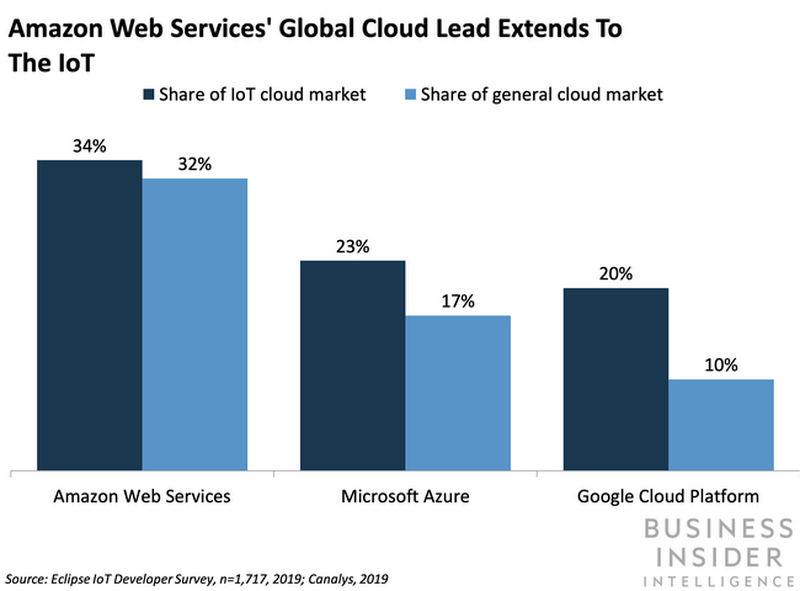
To connect and manage devices
One of the leading cloud providers, Amazon offers several dedicated services to connect, configure, manage and secure IoT devices. AWS IoT Core is a major service that helps connect billions of devices with each other and to the cloud and enables two-way data communication. To manage a large fleet of devices, you can use AWS IoT Device Management. This service simplifies device onboarding, monitoring and maintenance. In turn, AWS IoT Device Defender provides security and helps detect abnormalities in device behavior and address issues in time.
Azure IoT Central acts as a core service of the IoT platform from Microsoft. This service is enough to build an IoT application for a common use case, and even provides a set of templates for easy setup. Unlike AWS IoT Core, it already includes device monitoring and management tools. If you combine it with Azure IoT Hub, you can build more complex IoT applications that extend to billions of devices. You can implement a custom data infrastructure channeling metrics to different Azure services and returning commands to your fleet of devices. Google also offers one of the biggest development platforms for IoT.
Google IoT Core is the analog for Azure IoT Central and AWS IoT Core with its own features and benefits. Like its counterparts, it allows connecting end devices such as sensors and actuators with more complex node devices and the cloud. Apart from this, Google IoT Core service works both as a communication broker and a device management module – establishes reliable communication between IoT devices and cloud services and allows remote device control and management on a global scale. Cloud Pub/Sub service helps route data from IoT devices to other Google services for processing and further use.
To enable edge intelligence
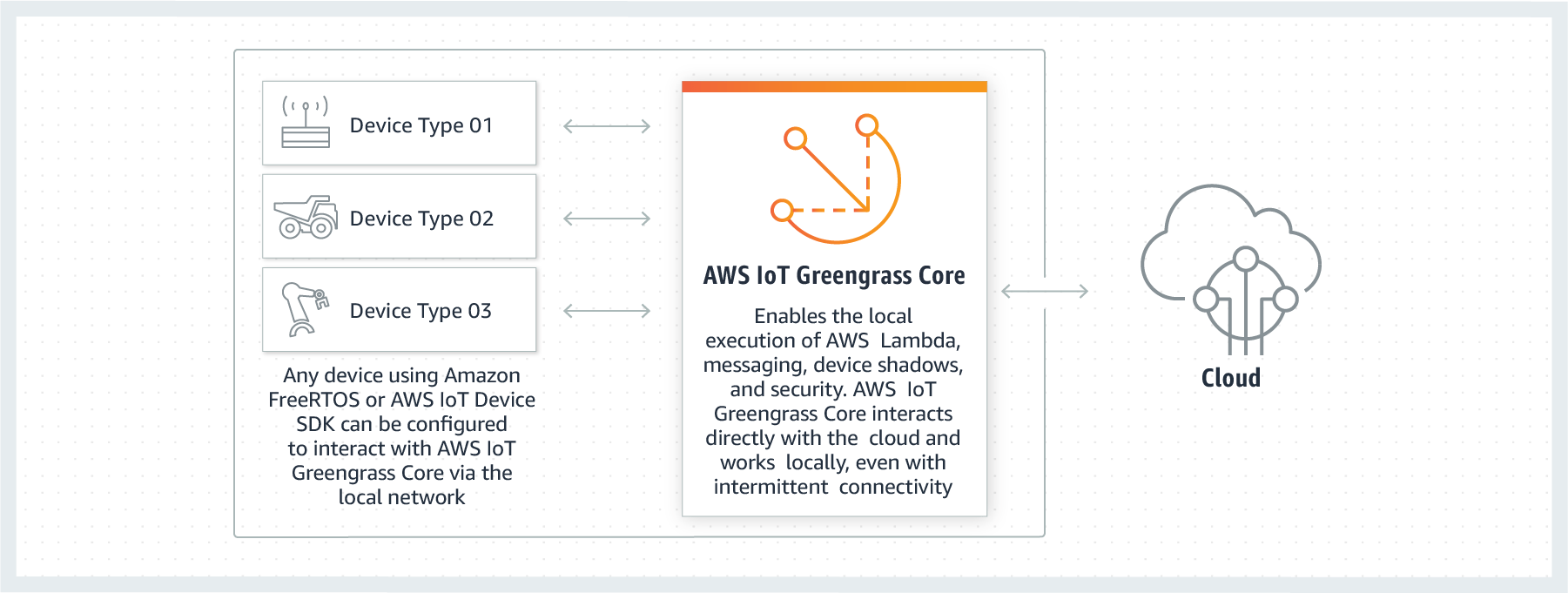
Each of IoT software platforms provides services to enable edge intelligence given its growing importance and applications in IoT systems.
Amazon IoT Greengrass is exactly this kind of service. It allows programming local computing devices like gateways to process sensor data on the edge and send commands to act on this data immediately.
Azure IoT Edge performs similar functions in Azure-based systems and helps move part of data processing to edge Windows and Linux devices.
By the way, both Amazon IoT Greengrass and Azure IoT Edge allow running trained ML models locally. However, possibly, the most powerful offering for adding machine intelligence to the edge comes from Google.
Google offers a combo of Edge TPU chip and Cloud IoT Edge software that allows running ML models locally super-fast, super-efficiently, and adds an extra layer of security for connecting edge devices to the cloud.
To use cloud services
Probably, the best part of comparing IoT development platforms is exploring their vast capabilities for IoT data analytics, visualization and management. For these purposes, AWS IoT provides a set of tools including:
- powerful AWS IoT Analytics for preparing data and implementing different analytics and visualizations practices;
- AWS IoT SiteWise tool for industrial IoT applications focused on working with heterogeneous equipment data;
- AWS IoT Events service to define events and efficiently act on them.
Azure Times Series Insights is a complex of data analytics and visualization tools from Microsoft. Initially, it filters and prepares IoT data depending on its purpose. When prepped, the data can be used for analytics and building custom visualizations or redirected to other services, for example, Azure Machine Learning. Azure Times Series Insights can also be integrated with Power BI which is convenient for the many companies that already use this service.
Google Cloud IoT provides a range of its own services for data analytics and visualization. Among them are:
- Cloud Functions to configure devices to act on certain events;
- Dataflow to process streaming data in real-time;
- BigTable to store large huge volume of data;
- BigQuery to quickly pull out data insights;
- DataStudio to visualize data insights pulled out from BigQuery data warehouse;
- DataLab to develop custom data analytics practices and visualizations.
Perks
It would be hard to compare the major IoT development platforms when all of them basically cover all bases and provide similar services. However, there’re always some perks that define certain benefits of each platform.
AWS IoT Platform
In the case of AWS IoT, it would be the simplicity of building a standard IoT application and integrating it into an existing business process. One of the platform’s services is a drag-and-drop tool for building IoT applications – AWS IoT Things Graph. It offers a convenient interface to connect and configure devices and different web services. On top of that, it has a range of prebuilt models for popular applications like agricultural software for soil monitoring, etc.
Microsoft Azure IoT Platform
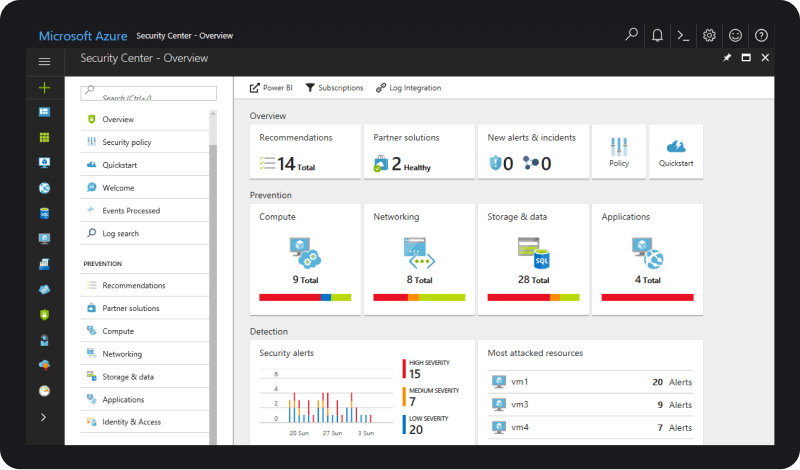
Azure IoT platform also provides several but not many templates for building commonly used IoT applications with its IoT Central services. However, the service that really stands out among other platforms is Azure Digital Twins. It helps create a virtual model of a physical environment including the people, devices and spaces in it. Using Digital Twins, the platform’s customers can better understand the context where their systems work, interactions with users, experiences, etc. and can adjust their applications accordingly.
Google Cloud IoT
Google Cloud is one of the most resourceful platforms with a truly global presence. It gives the platform’s customers a rich choice of top-tier services to expand their IoT applications (e.g. Google Maps, AI platform, etc.) and tools to build the whole fleets of connected devices (Android Things).
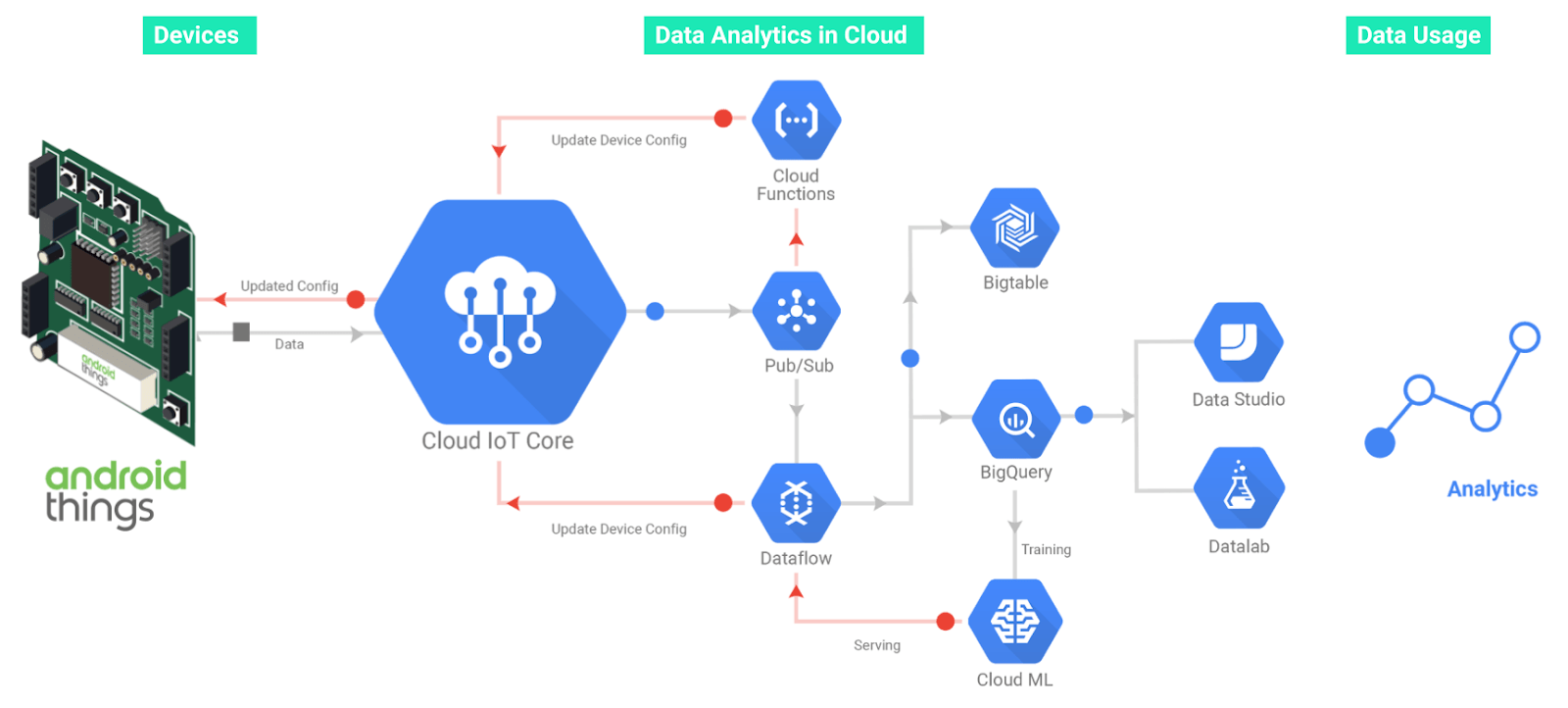
Other IoT development platforms
What about other players? There is, in fact, a great number of IoT development platforms from major smart device producers like Samsung or GE as well as open-source IoT platforms. Each of them has its own focus and strengths.
For example, IBM Watson IoT has a strong suit when it comes to AI technologies. GE Predix Platform is fully focused on IIoT and provides specific tools to build industrial applications. Cisco IoT platform is leading the market in building edge infrastructure and networking being able to provide state-of-the-art hardware, software and cloud services.
Read: Benefits of IoT home automation technology
IoT Development Solutions with Digiteum
If you are interested in any of the IoT application development platforms we have talked about, web and mobile app development platforms or actively looking for other tools for your IoT project and need an expert opinion, contact Digiteum. We have solid experience in working with all major platforms and cloud services and will be able to help you choose the right providers and answer all your questions. Check our IoT web development services and our portfolio to learn more about our experience and skills.




